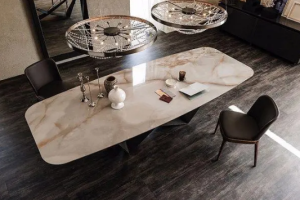When selecting quartz countertops, one of the key decisions involves choosing the thickness of the material. Both 2cm and 3cm slabs are popular choices, but they differ in terms of aesthetics, functionality, and installation methods. Understanding these differences is crucial for making an informed decision that best suits your design and durability needs.
Thickness and Weight
Material Density and Application
The primary difference between 2cm and 3cm quartz countertops is, of course, the thickness. A 2cm slab is approximately 0.79 inches thick, while a 3cm slab is about 1.18 inches. This extra thickness impacts the weight substantially. A 3cm slab is heavier, offering more sturdiness and potentially eliminating the need for plywood support under the countertop, which is often required for 2cm countertops in larger installations.
Structural Integrity
Durability and Support Requirements
3cm quartz countertops are generally more robust due to their thickness, which provides a higher level of resistance to bending. They can span larger areas without additional support, making them ideal for long stretches of kitchen counters or large islands without cabinets underneath. Conversely, 2cm countertops are lighter and might require additional structural support when installed over large spans.
Installation and Cost Implications
Ease of Handling and Installation
Due to their lighter weight, 2cm countertops are easier to handle, which can simplify the installation process. However, they might need a plywood backing or additional support brackets, which adds to the labor and materials costs. On the other hand, 3cm countertops, while heavier and potentially more challenging to maneuver during installation, generally do not require such supports, leading to a cleaner look under the counter.
Cost Differences
When it comes to cost, 2cm quartz is typically less expensive per square foot than 3cm quartz. However, the total installation cost might equalize or even tilt in favor of 3cm countertops when considering the potential need for additional supports and the labor involved in installing them.

Aesthetic and Design Flexibility
Edge Profile Options
3cm quartz allows for a broader range of edge profiles, which can enhance the design aesthetic of your space. Options like a dramatic ogee, bullnose, or chiseled edge are more effectively executed with thicker quartz. In contrast, the edge profiles available for 2cm countertops tend to be more limited, often restricted to simpler styles such as beveled or squared edges.
Visual Presence and Appeal
The visual impact of 3cm quartz countertops is often considered more substantial and luxurious compared to 2cm countertops. The thicker quartz provides a more pronounced profile that many find aesthetically pleasing and more akin to high-end stone materials.
Explore the Details
For more insights and a visual comparison of the difference between 2cm and 3cm quartz, click this link. It provides detailed explanations and images that can help you decide which thickness is right for your design and practical needs.
Choosing between 2cm and 3cm quartz countertops involves weighing the benefits of each in terms of installation, cost, and the overall look of your space. By understanding these key differences, you can better align your choice with your project’s requirements and aesthetic goals.